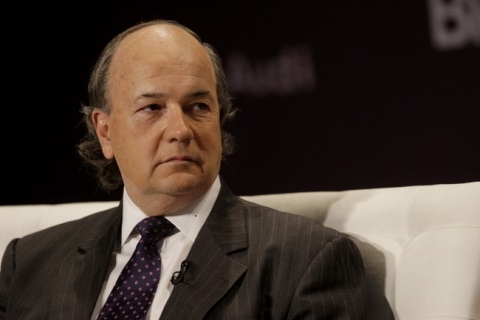Retirement Crisis in the History of the World
– Ever wondered when the next financial crisis will be? Possibly in just a couple of years with the “coming collapse of the international monetary system.”
That is the not-so-subtle subtitle of Jim Rickards’ bestselling book, “The Death of Money”. As you might gather, the portfolio manager at investment-management firm West Shore Group doesn’t foresee a smooth ride ahead for investors. Think 2008, but worse.
Reuters sat down with Rickards recently, to chat about how much we should be trusting the numbers in our bank accounts.
Q: Most people assume that the money in their wallets is safe and secure. But is it really?
Financial advice and preparedness
A: No, for two reasons. First, as we saw in the 1970s when we had a period of high inflation, the dollar’s value was cut in half in only five years. So that can happen very, very quickly.
The second vulnerability is that the dollar is actually a digital currency. People look at Bitcoin and call it that, but so is the dollar. An overwhelming percentage of transactions these days are digital, starting with the trillions of dollars in the Treasury market. The last time people had actual paper bonds in safe deposit boxes was in the 1970s.
In the old days, the government had ways of shutting things down entirely in times of crisis, like arranging bank holidays or closing stock exchanges. With a digital currency, we could all be very vulnerable during the next financial panic.
Q: Your book is called “The Death of Money”. What does that mean to you?
A: What that means is a potential loss of confidence. There is always going to be some kind of money in the world, whether it is clamshells or Bitcoins. Anything can be money as long as people have confidence in it. But the minute that confidence is lost, it ceases to function as money.
And once it is lost, it is very difficult to regain. Money is money up until the moment it isn’t. So the real question is, what dynamics are at play that could cause people to lose confidence in the dollar? That’s why when the Federal Reserve is printing money in order to stimulate the economy, it is playing a dangerous game.
Q: What kind of time frame are we looking at, for a potential loss of confidence in the dollar?
A: A lot of people are focused on the single snowflake that causes the avalanche. They want to know when it’s going to happen and what it’s going to look like. Of course, I don’t know that any more than anybody else. But what you can be certain of, is that there is going to be an avalanche.
Another good metaphor is the earthquake. The other day I stood on the San Andreas Fault, and nothing was moving. That doesn’t mean everything is stable; it is just a matter of time. That is what I believe about the financial system. I would say it is a matter of a couple of years [until a major crisis], not 10 years or more.
Q: And what will be the size of the next crisis, in your opinion?
A: The next financial panic will be the largest in history. I was involved in the Long-Term Capital Management affair, as a general counsel – and even then, we were hours away from taking down every market in the world. That time, Wall Street bailed out a hedge fund.
Fast forward to 2008, and this time it was the Feds who bailed out Wall Street. Each bailout is bigger than the last. When the next panic happens, it will be bigger than the Fed. And then what are we going to do? Just keep printing trillions of dollars?
Q: So what should individual investors do, as a result?
A: I would advise that people look at what Warren Buffett is doing. For one of his most recent deals, he went out and bought a railroad – a hard asset that makes money moving other hard assets, like coal and wheat.
RELATED : Preparing for an economic collapse: The importance of home security
Of course, individual investors can’t go out and buy railroads, but they can invest in the same spirit, and look at hard assets. You can buy gold, maybe with a 10 percent portfolio allocation, which will give you some protection. You can buy land, or fine art, or stocks with a focus on energy, transportation, natural resources, water and agriculture. A portfolio like that will help preserve your wealth in this current climate.
Q: Where might the next panic begin?
A: It could begin in a lot of different places. But one place to keep a close eye on is China, which is on the verge of a major credit collapse. That could be the one snowflake that starts the global avalanche.
Other useful resources:
Backyard Innovator (A Self Sustaining Source Of Fresh Meat,Vegetables And Clean Drinking Water)
Blackout USA (EMP survival and preparedness)
Conquering the coming collapse (Financial advice and preparedness )
Liberty Generator (Build and make your own energy source)
Backyard Liberty (Easy and cheap DIY Aquaponic system to grow your organic and living food bank)
Bullet Proof Home (A Prepper’s Guide in Safeguarding a Home )
Family Self Defense (Best Self Defense Strategies For You And Your Family)
Sold Out After Crisis (Best 37 Items To Hoard For A Long Term Crisis)
By Chris Taylor
SOURCE : www.reuters.com



The point that is mind boggling is how powerful the few have to be able to hold down the truth. Worst of all is how ignorant and stupid the people of this world look like.